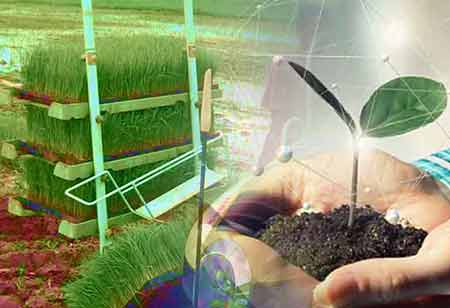Thank you for Subscribing to Agri Business Review Weekly Brief
Intelligent Fish Farm: What You Need to Know
Traditional aquaculture relies primarily on personal experience and is inefficient, expensive, and under-automated.Traditional aquaculture relies primarily on personal experience and is inefficient, expensive, and under-automated.

By
Agri Business Review | Wednesday, June 22, 2022
Stay ahead of the industry with exclusive feature stories on the top companies, expert insights and the latest news delivered straight to your inbox. Subscribe today.
With the continual expansion of aquaculture scale and density, modern aquaculture techniques have been compelled to overproduce, resulting in an accelerated pace of water environment imbalance, the prevalence of fish diseases, and a reduction in the quality of aquatic products.
FREMONT, CA: Traditional aquaculture relies primarily on personal experience and is inefficient, expensive, and under-automated. Multiple personnel on board service vessels carry out day-to-day tasks on fish farm facilities, such as fish welfare monitoring, facility inspections, management of feed rationing, and lice counting. Future autonomous and remotely operated systems may play a significant role in executing various activities at fish farm facilities. The working conditions in aquaculture are extremely complex and rapid change, especially in marine cage culture. Intelligent equipment and robots will use modern sensors, big data, and AI to successfully adapt to a complex operating environment and enable the autonomous operation of an intelligent fish farm. They can also significantly cut labor intensity and costs and increase the production efficiency of the fishing industry. Moreover, intelligent equipment and robots can independently sense the vast data of an intelligent fish farm and communicate them to the cloud platform as the data foundation for big data analysis.
AI supports intelligent equipment and robots and provides intelligent equipment and robots with "intelligent minds" that can autonomously learn, evaluate, and make decisions in fishery production. Combining information technology, machinery, and automation technology yields robot technology. It enables all types of machines to participate in the entire fishing production process as humans do. Additionally, intelligent equipment and robots require edge computing, machine vision, navigation, and precision control technology to meet the desire for machines to replace humans.
Intelligent equipment is based on traditional fisheries equipment that employs modern information technology and intelligent manufacturing technologies for digital transformation to perform precise operations in an intelligent fish farm. Intelligent farm equipment and robots can be classified as either mobile or stationary. Mobile equipment refers primarily to unmanned ground vehicle (UGV), unmanned aerial vehicles (UAV), unmanned ship or unmanned surface vessel (USV), and unoccupied underwater robots that are required for autonomous operation (ROV). Equipment that is fixed includes water quality monitoring and control equipment, feeding equipment, oxygen equipment, and harvesting equipment such as a fish suction pump and classification equipment.





